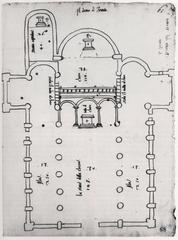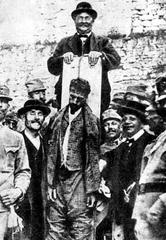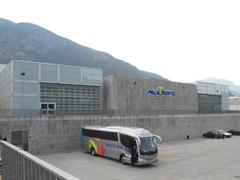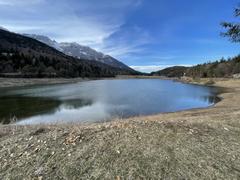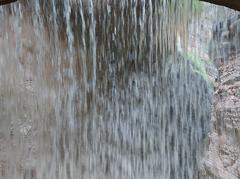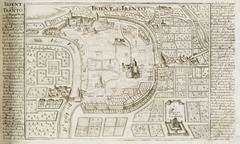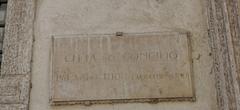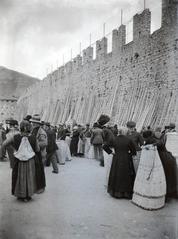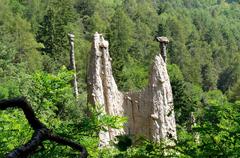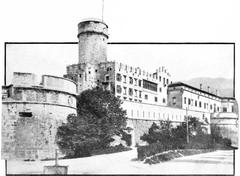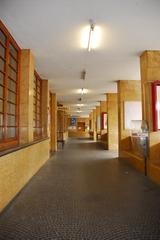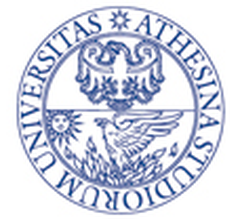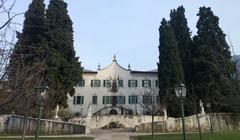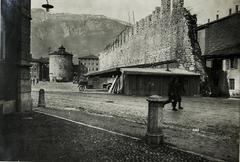
Trento Cathedral Visiting Hours, Tickets, and Historical Sites Guide
Date: 14/06/2025
Introduction
Trento Cathedral, formally known as the Cathedral of San Vigilio (Duomo di Trento), stands as the spiritual and architectural heart of Trento, northern Italy. Renowned for its layered history, dramatic Romanesque and Gothic architecture, and pivotal role in the Council of Trent, the cathedral is both a living monument of faith and a cornerstone of European cultural heritage (Wikipedia; Italyscapes). This guide provides comprehensive information for visitors—covering history, architecture, opening hours, ticketing, accessibility, and travel tips—ensuring a rich and well-prepared experience at this iconic site.
Historical Overview
Early Christian Foundations
The roots of Trento Cathedral reach back to the late Roman Empire when Bishop Vigilius founded a 4th-century basilica on this site to honor the memory of martyred missionaries (Wikipedia; Italyscapes). The basilica also served as a cemetery church, a function typical in early Christianity. The crypt beneath the current cathedral preserves mosaic floors and remnants of these early structures, though access may be limited due to ongoing restoration (Trento.info; MissTourist).
Romanesque-Lombard Rebuilding
By the 11th century, the original basilica had decayed. Prince-Bishop Uldaric II began a new church, completed in the 12th century and fundamentally transformed in 1212 when Bishop Federico Wanga launched the construction of the current Romanesque-Lombard cathedral, entrusting the project to Adamo d’Arogno and his descendants (VisitTrentino). This phase established the building’s monumental form and robust stonework.
Gothic and Baroque Evolution
Subsequent centuries saw Gothic innovations, such as the pointed arches, ribbed vaults, and the famed “Wheel of Fortune” rose window in the northern transept (Italyscapes; MissTourist). Baroque influences arrived in the 17th century with the construction of the Crucifix Chapel by Giuseppe Alberti, featuring dynamic sculpture and ornate altarpieces (intheworldsjungle.com).
The Council of Trent
Trento Cathedral’s global historical stature is anchored in its role as the principal venue for the Council of Trent (1545–1563), where the Catholic Church responded to the Protestant Reformation with lasting doctrinal and disciplinary reforms (Wikipedia; Italia.it). The decrees announced before the wooden crucifix in the Baroque chapel shaped Catholicism for centuries (Travel to Italy Guide).
Architectural Highlights
- Romanesque and Gothic Core: The cathedral’s Latin cross floor plan, thick walls, and rounded arches are hallmarks of the Romanesque-Lombard style, while pointed arches and stained glass windows reflect later Gothic additions (Italyscapes).
- Wheel of Fortune Rose Window: A medieval masterpiece symbolizing destiny, located in the northern transept (VisitTrentino).
- Crucifix Chapel: Created in 1682, this Baroque chapel houses the crucifix before which Council decrees were published (Wikipedia).
- Frescoes and Altars: The interior is adorned with centuries of frescoes, altarpieces, and expressive woodwork, especially in side chapels (intheworldsjungle.com).
- Torre Civica: The adjacent civic tower, built in the 12th century, stands atop ancient Roman walls and has served as a prison and watchtower (intheworldsjungle.com).
Piazza del Duomo: Urban Setting
Trento Cathedral presides over Piazza del Duomo, the city’s main square, surrounded by Renaissance palazzi, the Neptune Fountain, and lively cafés (lauratheexplorer.co.nz). The harmonious layout and frescoed facades create a unique blend of Italian and Alpine aesthetics, reflecting Trento’s position as a cultural crossroads.
Visitor Information
Opening Hours
- General Hours: The cathedral is typically open from 8:00 or 9:00 AM to 6:00 PM daily. Hours may vary on religious holidays or for special services. Always check the official schedule before your visit.
Tickets and Admission
- Main Cathedral: Entry is free. Donations are appreciated to support maintenance.
- Crypt and Special Areas: A small fee (approx. €3-5) may apply for the crypt or archaeological zones.
- Guided Tours: Available in multiple languages, covering history, architecture, and art. Book in advance online or at the visitor center (VisitTrentino).
Accessibility
- Wheelchair Access: The main nave and piazza are accessible; crypt and upper galleries may have limited access due to stairs.
- Facilities: Restrooms and refreshment options are available in the surrounding piazza (ReadySetItaly).
Dress Code and Photography
- Dress Modestly: Shoulders and knees covered; hats removed inside.
- Photography: Allowed without flash, except during services. No tripods.
Getting There
- Location: Central in Trento, a short walk from the main train station.
- Public Transport: Trentino Guest Card holders enjoy free city transport (lauratheexplorer.co.nz).
Enhancing Your Visit
- Audio Guides: Available for deeper exploration of history and art.
- Diocesan Museum: Located next door in Palazzo Pretorio, offering extensive religious art collections (Savoring Italy).
- Events: Attend mass, religious festivals (notably the feast of San Vigilio, June 26), or concerts for a richer experience (Trento.info).
Frequently Asked Questions (FAQ)
Q: What are the current opening hours?
A: Usually 8:00/9:00 AM to 6:00 PM, but check the official website for updates.
Q: Is there an entry fee?
A: Entry is free; there may be a fee for the crypt or special exhibitions.
Q: Are guided tours available?
A: Yes, in several languages. Book ahead during busy seasons (VisitTrentino).
Q: Is the cathedral accessible for wheelchair users?
A: Yes, the main areas are accessible; some historic sections have limited access.
Q: Can I take photos inside?
A: Non-flash photography is allowed except during religious services.
Q: What other attractions are nearby?
A: Piazza Duomo, Neptune Fountain, Palazzo Pretorio, Tridentine Diocesan Museum, and various shops and cafés (ReadySetItaly).
Practical Tips
- Best Visiting Times: Early morning or late afternoon for a quieter experience.
- Seasonal Highlights: The Christmas Market in winter and local festivals in summer create lively atmospheres (Catholic Travel Guide).
- Respect: Silence and modest dress are expected, especially during mass or religious events.
Summary Table: Key Features
| Feature | Style/Period | Notable Details |
|---|---|---|
| Nave & Transept | Romanesque/Gothic | Barrel and ribbed vaults, massive columns |
| Rose Window | Gothic (13th c.) | ”Wheel of Fortune” allegory, stained glass |
| Crucifix Chapel | Baroque (1682) | Wooden crucifix, ornate altarpiece |
| Torre Civica | Romanesque (12th c.) | Former residence, prison, city landmark |
| Piazza del Duomo | Medieval/Baroque | Neptune Fountain, frescoed facades |
Conclusion
Trento Cathedral is much more than a tourist attraction—it is a living chronicle of European faith, art, and civic pride. Its enduring beauty, central location, and wealth of historical layers make it essential for any visitor to Trento. Plan ahead, consider joining a guided tour, and explore the surrounding piazza and museums to fully appreciate this remarkable site.
For an enhanced visit, download the Audiala app for self-guided tours and updates on Trento’s attractions. Stay informed through local tourism resources for the latest on events and exhibitions.
Official Sources and Further Reading
- Wikipedia: Trento Cathedral
- Italyscapes: Cathedral of San Vigilio
- VisitTrentino: Basilica Duomo di S. Vigilio
- intheworldsjungle.com: Monumental Highlights of Trento
- Trento.info: Cathedral of Trento
- Italia.it: Guide to Trento Cathedral
- Travel to Italy Guide: Why is Trento Important?
- lauratheexplorer.co.nz: Visiting Trento Italy
- ReadySetItaly: Best Things to Do in Trento
- The Catholic Travel Guide: Trento Cathedral
- Savoring Italy: Tridentine Diocesan Museum
